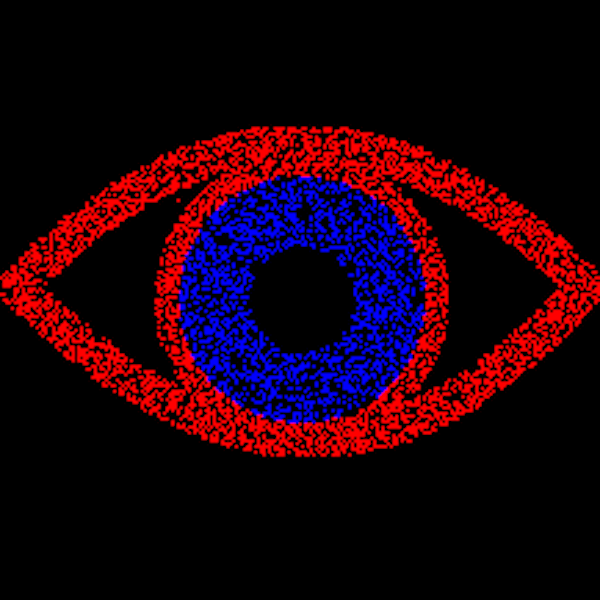**Chromostereopsis: An Engaging Visual Enigma**
Chromostereopsis is a captivating visual illusion that introduces an unforeseen dimension to static images through color interaction. This phenomenon can fluctuate greatly among individuals, yielding distinct experiences influenced by personal visual interpretation.
**The Illusion Revealed**
Picture viewing an image where a blue iris is contained within a red eye. To some, this might appear unnoteworthy at first glance. Yet, for others, this pairing generates a compelling depth illusion, where the colors seem to inhabit different distances from the viewer. This experience may intensify under particular circumstances like rapid blinking, heightened screen brightness, or observation in a low-light setting.
A significant feature of chromostereopsis is its individual diversity. People vary not just in the strength of the effect but also in the sensation of which color appears closer. Generally, red is noted as nearer, while blue seems more distant. Curiously, this perception can invert for others, resulting in a flipped depth experience.
**Mechanics Behind the Enchantment**
The conventional comprehension of stereo-depth illusions involves utilizing two images presented separately to each eye, similar to the 3D sensation in theaters using polarizing or red-green glasses. Nevertheless, chromostereopsis challenges this convention by creating a stereo illusion from a singular image. This uniqueness implies that obscuring one eye can lead to the disappearance of the illusion, as the depth necessitates input from both eyes to materialize.
The science governing chromostereopsis remains partially elucidated. The separation of red and blue at contrary ends of the light spectrum plays a role, as these colors might focus differently on the retinal surface. This distinction can be amplified by eyewear and background luminance.
**Art and Utilization**
Throughout history, the interplay of colors has been fundamental in art, spanning from ancient stained glass to contemporary digital works. Artists have likely engaged with chromostereopsis unwittingly, deploying color to enhance visual effects. In modern instances, programs like “Have I Got News For You” showcase the effect in practical applications.
Chromostereopsis continues to fascinate both scientists and artists, presenting a mixture of enigma and creativity that challenges our perception of visual interpretation.
For further investigation into depth illusions and chromostereopsis, resources like the Mind Hacks book and research by experts such as Kitaoka offer comprehensive insights into this intricate visual phenomenon.
